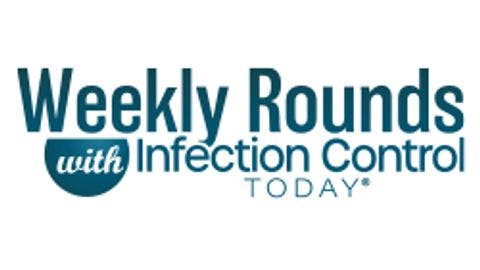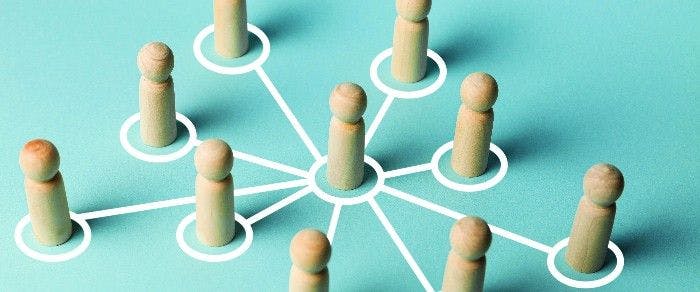Surgical site infection (SSI) surveillance1 is a process of monitoring and reporting infections that occur after surgery in the part of the body where the surgery occurred. It helps hospitals track patient outcomes and review or change their practices to prevent further infections. SSI surveillance is an essential component of infection prevention and control in health care settings. It helps monitor the incidence and impact of SSIs, identify risk factors and gaps in practice, and evaluate the effectiveness of interventions.
Depending on your setting and location, you can access the data collection forms for surgical site infection (SSI) surveillance from various sources. Some of the sources include the following:
- CDC’s National Healthcare Safety Network (NHSN) Outpatient Procedure Component,⁷ which provides protocols, data collection forms, and analysis resources for SSI surveillance in outpatient procedure component settings in the US.
- The World Health Organization’s global guidelines for the prevention of SSIs, which provide surveillance forms for perioperative and postoperative data collection, as well as a hand hygiene observation form.⁸
- CDC’s NHSN Patient Safety Component,⁸ which provides data collection forms and instructions for SSI surveillance in acute care hospitals in the US.
SSI surveillance requires accurate and timely data collection and reporting. Facilities must conduct routine and periodic data quality checks to ensure consistency, completeness, and reliability of reported data to the National Healthcare Safety Network (NHSN).2 Data quality tools can help facilities conduct routine and periodic data quality assessments and improve their data quality practices.
Employing electronic screening algorithms that automatically identify potential SSI cases from various data sources can help reduce the workload and bias of manual chart review and increase the sensitivity and specificity of SSI detection. It is crucial to regularly validate and update electronic screening algorithms to ensure their performance and validity.
Further Reading:
- This article provides global guidelines for preventing surgical site infection (SSI) and implementation tools and surveillance forms.³ The article provides a list of 29 recommendations on various topics, such as preoperative measures, intraoperative measures, postoperative measures, antimicrobial prophylaxis, and surveillance. The article also provides links to the full guidelines, the implementation manual, web appendices, and The Lancet Infectious Diseases publications.
Reliability and validity of multicenter surveillance of SSI after colorectal surgery:9This article reports a study investigating the reliability and validity of SSI surveillance after colorectal surgery in the Netherlands.
Expert commentary on the challenges and opportunities for SSI prevention and control in Asia-Pacific:¹⁰This article discusses the challenges and opportunities for SSI prevention and control in Asia-Pacific, such as the diversity of health systems, resources, and practices.
Validating Surgical Site Infection Surveillance
CDC recommends using the NHSN Patient Safety Component1 to monitor and report data on health care–associated infections, including SSIs. This system provides standardized definitions, protocols, forms, and tools for SSI surveillance. It also allows for comparison and benchmarking among hospitals. CDC also offers guidelines and resources for preventing and controlling SSIs.
According to CDC and the World Health Organization, validating SSI surveillance is essential because it helps to detect the problem’s magnitude and assess the impact of any prevention or improvement intervention.1,3 It also enables accurate comparison of infection rates across different settings and provides feedback to surgeons and other health care workers.
SSI surveillance can be validated using standardized definitions, data collection forms, and reporting procedures. It can also involve comparing the surveillance data with other sources of information, such as patient records, laboratory results, or postdischarge surveys. Additionally, it can include conducting a proactive risk assessment to identify and prioritize areas for improvement.
More tools and information are available, as follows:
A tool kit for data quality checks for reporting facilities by CDC.4 This tool kit provides guidance for data quality activities suggested to be conducted annually, quarterly/monthly, and routinely by health care facilities to ensure that data reported to NHSN are accurate. The data quality components and tools are specific to 7 health care–associated metrics, including SSI.
A guideline for SSI events by CDC.5 This guideline provides evidence-based strategies for SSI prevention and surveillance. It also defines the criteria and methods for SSI detection and reporting.
A study on validation of semiautomated SSI surveillance using electronic screening algorithms.6 This study verified the validity of a semiautomated SSI surveillance system using screening algorithms in 38 categories of surgery.
One benefit of SSI surveillance is to prevent SSIs by providing feedback to surgeons and other health care workers on their performance and adherence to evidence-based guidelines. It also helps to improve patient outcomes and safety by reducing morbidity, mortality, and costs associated with SSIs. Finally, it helps to compare infection rates across different settings and identify areas for improvement or best practices.
You can use automated SSI surveillance methods using electronic data sources, such as pharmacy records, administrative claims, electronic health records, or natural language processing. The advantages of automated methods include reducing the workload and cost of manual data collection and validation.1 They can also improve the sensitivity and timeliness of detecting SSIs, especially after discharge. They can facilitate the standardized and consistent application of surveillance definitions and criteria.
They can enable large-scale and cross-institutional surveillance and benchmarking.
However, the challenges of SSI surveillance are not inconsequential. They include the following:
- Constraints on human resources, such as lack of trained staff, high workload, and high turnover
- Lack of adequate policies and procedures, such as standardized definitions, data collection forms, reporting systems, and feedback mechanisms
- Lack of a strong safety culture, such as low awareness, motivation, or adherence among surgeons and other health care workers
- Limitations in funding and other resources, such as lack of equipment, supplies, infrastructure, or technology
- Environmental and geographic challenges, such as climate, humidity, pollution, or distance
- Cultural diversity, such as different languages, beliefs, or practices among patients and providers
- Poor patient awareness and responsibility, such as lack of education, empowerment, or engagement in infection prevention
Automated SSI surveillance methods also have limitations. They include the following:
- They may have lower specificity or positive predictive value than manual methods, resulting in false-positive cases or overestimation of infection rates.2,4
- They may miss some cases of infection that are not captured by electronic data sources, such as those diagnosed after discharge or in other facilities.1,6
- They may require complex data integration and validation processes, especially when using multiple data sources or different electronic health record systems.1,6
- They may not capture critical clinical or contextual information available in manual methods, such as wound characteristics, microbiology results, or antibiotic use.6
References:
- Surgical site infection. Centers for Disease Control and Prevention. September 28, 2021. Accessed May 3, 2023. https://www.cdc.gov/hai/ssi/ssi.html
- Annual surveys, locations & monthly reporting plans. Centers for Disease Control and Prevention. March 23, 2023. Accessed May 3, 2023. https://www.cdc.gov/nhsn/psc/locations.html
- Surgical site infections. World Health Organization. November 4, 2016. Accessed May 3, 2023. https://www.who.int/teams/integrated-health-services/infection-prevention-control/surgical-site-infection
- Toolkit for data quality checks for reporting facilities. National Healthcare Safety Network. April 2021. Accessed May 3, 2023. https://www.cdc.gov/nhsn/pdfs/validation/2021/2021-nhsn-iv-for-facilities-508.pdf
- Surgical site infection event (SSI). National Healthcare Safety Network. January 2023. Accessed May 3, 2023. https://www.cdc.gov/nhsn/pdfs/pscmanual/9pscssicurrent.pdf
- Cho SY, Chung DR, Choi JR, et al. Validation of semiautomated surgical site infection surveillance using electronic screening algorithms in 38 surgery categories. Infect Control Hosp Epidemiol. 2018;39(8):931-935. doi:10.1017/ice.2018.116


























